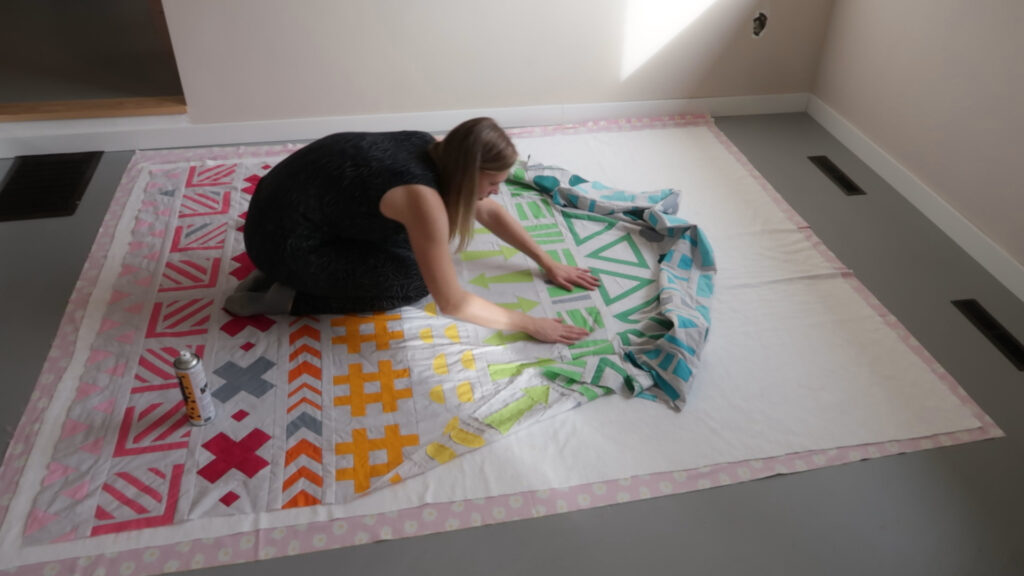Have you ever wondered what is quilt basting and how to do it yourself? Quilt basting is an important step in the quilting process that helps ensure your quilt will look its best once it is finished. Quilt basting is the process of temporarily securing the layers of a quilt together so that they can be quilted easily. Without quilt basting, the quilt top, batting, and backing layers can slip and slide as you work, making it difficult to keep everything in place. In this article, we will uncover the mystery of quilt basting and teach you how to do it yourself.
What is Quilt Basting?
Quilt basting is a technique used to hold the fabric layers of a quilt together by sewing or tacking them temporarily. It is a necessary step before quilting, and it helps ensure that the quilt layers remain aligned during the quilting process.
- Origin – Quilt basting originated in the 1800s, when it was called “tacking”. Quilt makers used a large needle and strong thread to secure the three layers of a quilt together.
- Materials – Quilt basting can be done with either hand-sewing or machine-sewing. Hand-sewing requires a large needle and strong thread, while machine-sewing requires a longarm quilting machine.
- Technique – Quilt basting is done by sandwiching the quilt top, batting, and backing together and then sewing them together with long, straight stitches. The stitches should be spaced evenly and should not be too tight or too loose.
- Benefits – Quilt basting helps ensure that the quilt layers remain aligned during the quilting process, and it also helps reduce puckering and shifting of the quilt layers.
- How to Hand Baste a Quilt – To hand baste a quilt, you will need a large needle, strong thread, and safety pins. Begin by sandwiching the quilt layers together and securing them with safety pins. Then, use the needle and thread to sew long, straight stitches through all the layers. Make sure to keep the stitches even and not too tight or too loose. When you are finished, remove the safety pins and admire your handiwork!
Why Do You Baste a Quilt?
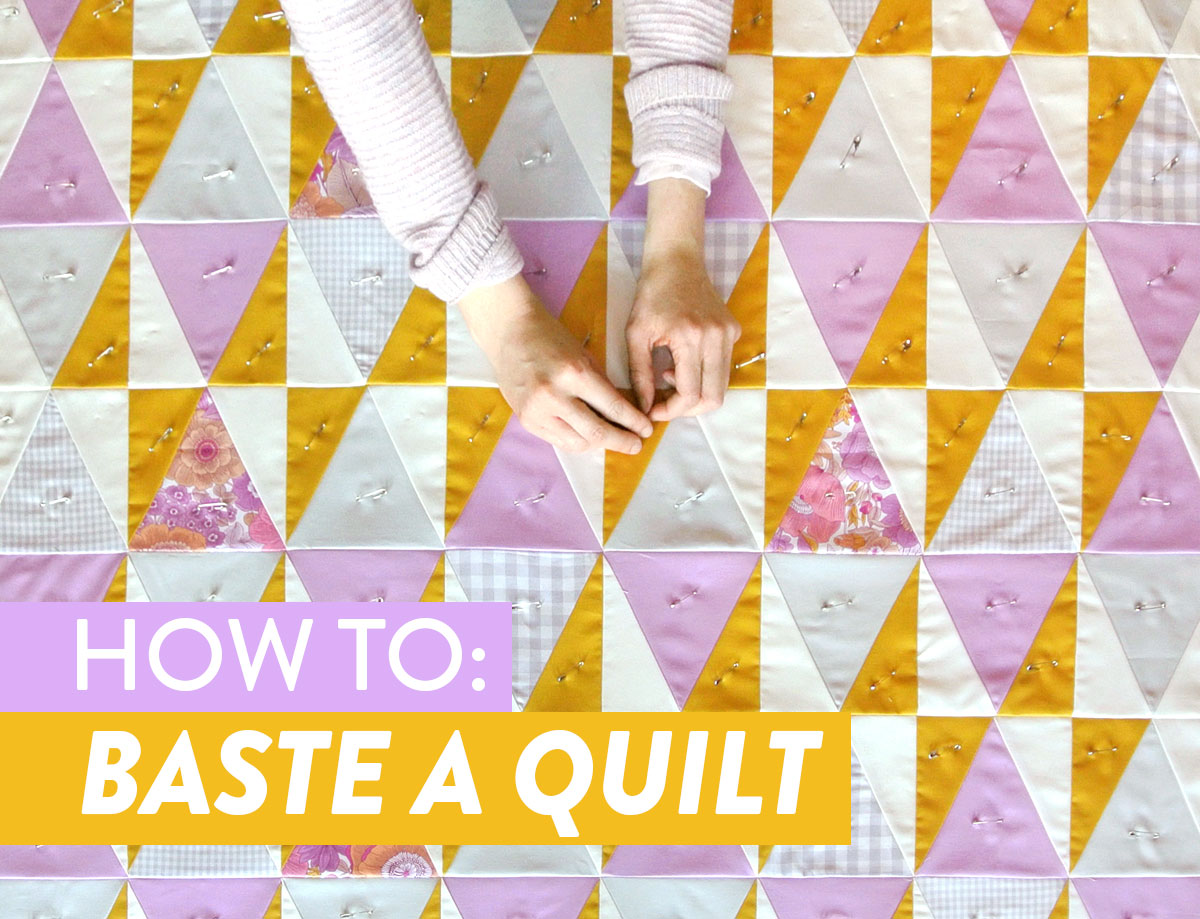
Basting is a technique used to temporarily hold the layers of a quilt together while quilting. It is an important step that helps to ensure that all the layers of the quilt will stay in place during the quilting process. Basting may be done by hand or by machine, and there are several different methods that can be used.
- Prevent Slippage – Basting helps to keep the layers of the quilt from slipping when the quilting is done. This helps to ensure that the quilting lines will remain straight and even.
- Prevent Gaps – Basting helps to keep the batting from shifting, thereby preventing gaps from forming between the quilt top and the backing.
- Easy Repositioning – If you need to reposition the layers of the quilt for any reason, it is much easier to do so if all the layers are basted together.
- Faster Quilting – If the layers of the quilt are basted together, it can speed up the quilting process, as you will not have to stop and reposition the layers as you sew.
Basting is an important step in quilt-making and can help to ensure that your quilt will look its best when finished.
Different Types of Basting
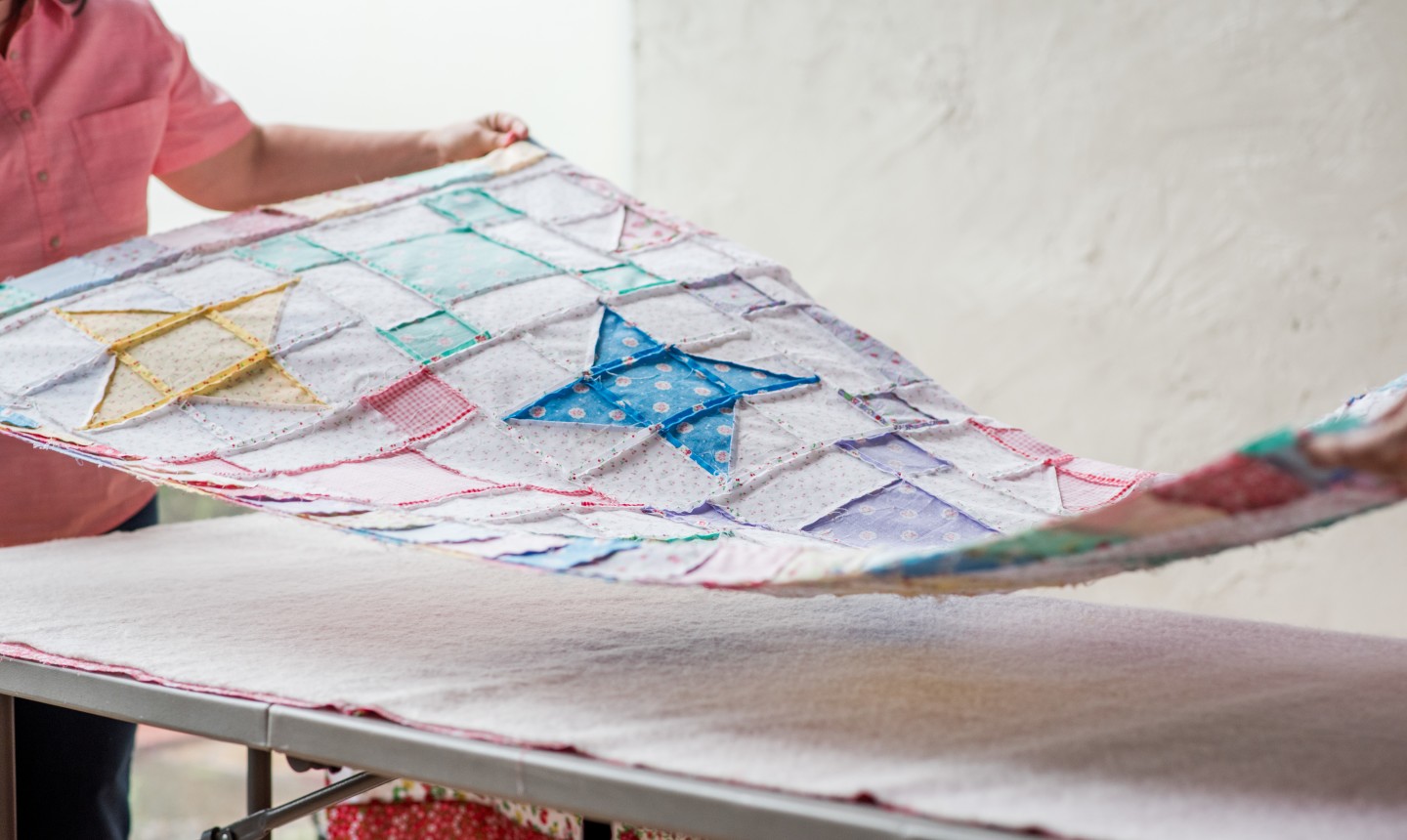
Hand Basting
Hand basting is an ancient quilting technique that is still popular today. It involves using a needle and thread to hand-sew the three layers of the quilt (top, batting, and backing) together. This is a tedious process, but it gives you a lot of control and flexibility when arranging your quilt layers. It’s also a great way to get a more precise alignment of your fabrics.
Spray Basting
Spray basting is a modern quilting technique that uses a spray adhesive to temporarily hold the quilt layers together. This is a much faster process than hand basting, and it eliminates the need for pins. However, it’s much less precise than hand basting and can be difficult to undo if you need to make any adjustments.
Pin Basting
Pin basting is a combination of hand and spray basting. It involves using a combination of pins and spray adhesive to hold the quilt layers together. This is a great way to get a more precise alignment of your fabrics and is much faster than hand basting. However, it can be more difficult to undo if you need to make any adjustments.
Preparing to Hand Baste a Quilt
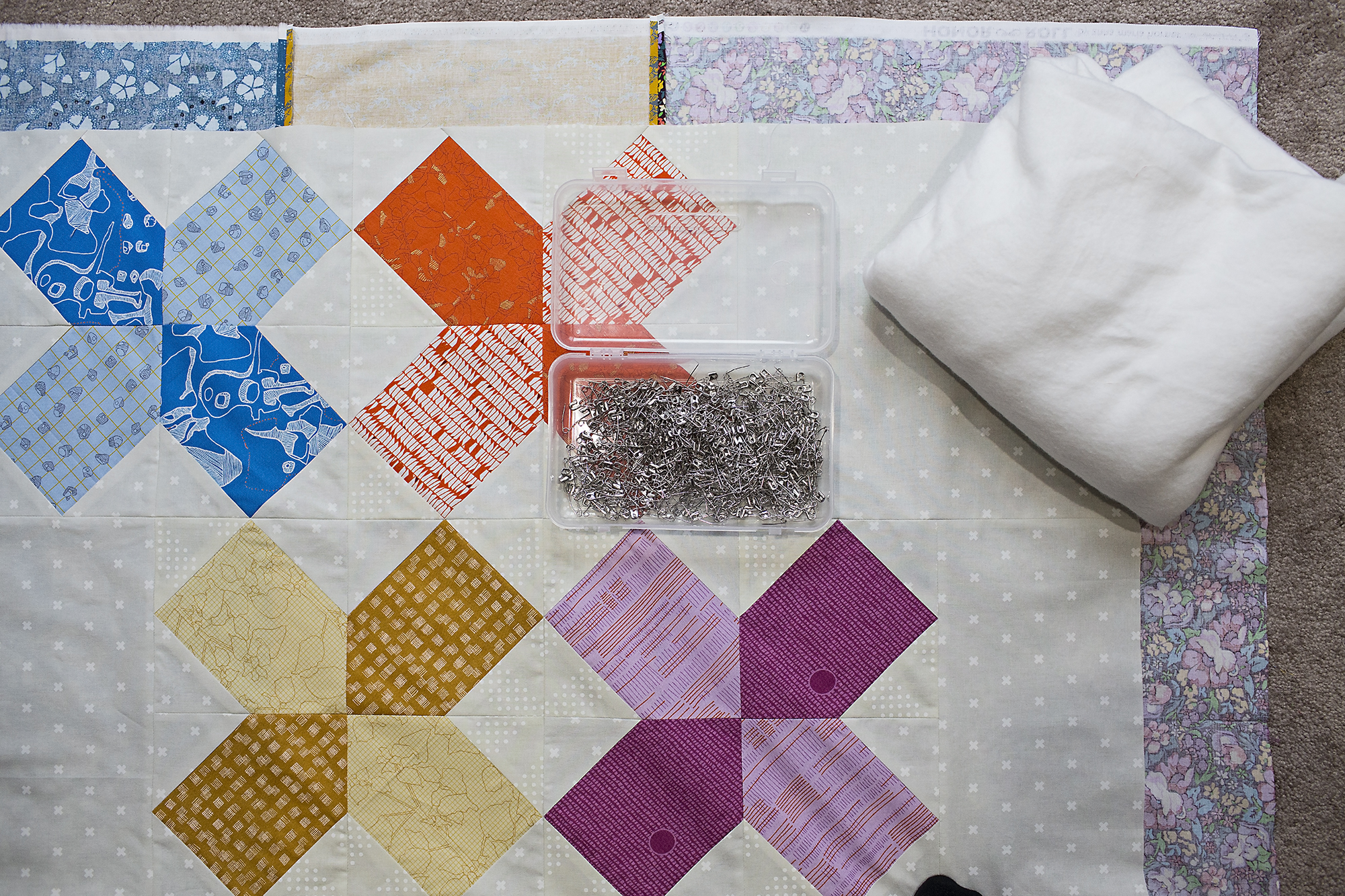
- Iron the quilt top and backing pieces to remove wrinkles.
- Lay the backing fabric wrong-side-up on a flat surface.
- Smooth the backing fabric and make sure it is larger than the quilt top.
- Lay the quilt top on the backing fabric right-side-up.
- Smooth the quilt top and make sure all edges are even.
- Pin the quilt top and backing together using safety pins.
- Place the pins every few inches to secure the quilt top and backing.
Hand Basting a Quilt
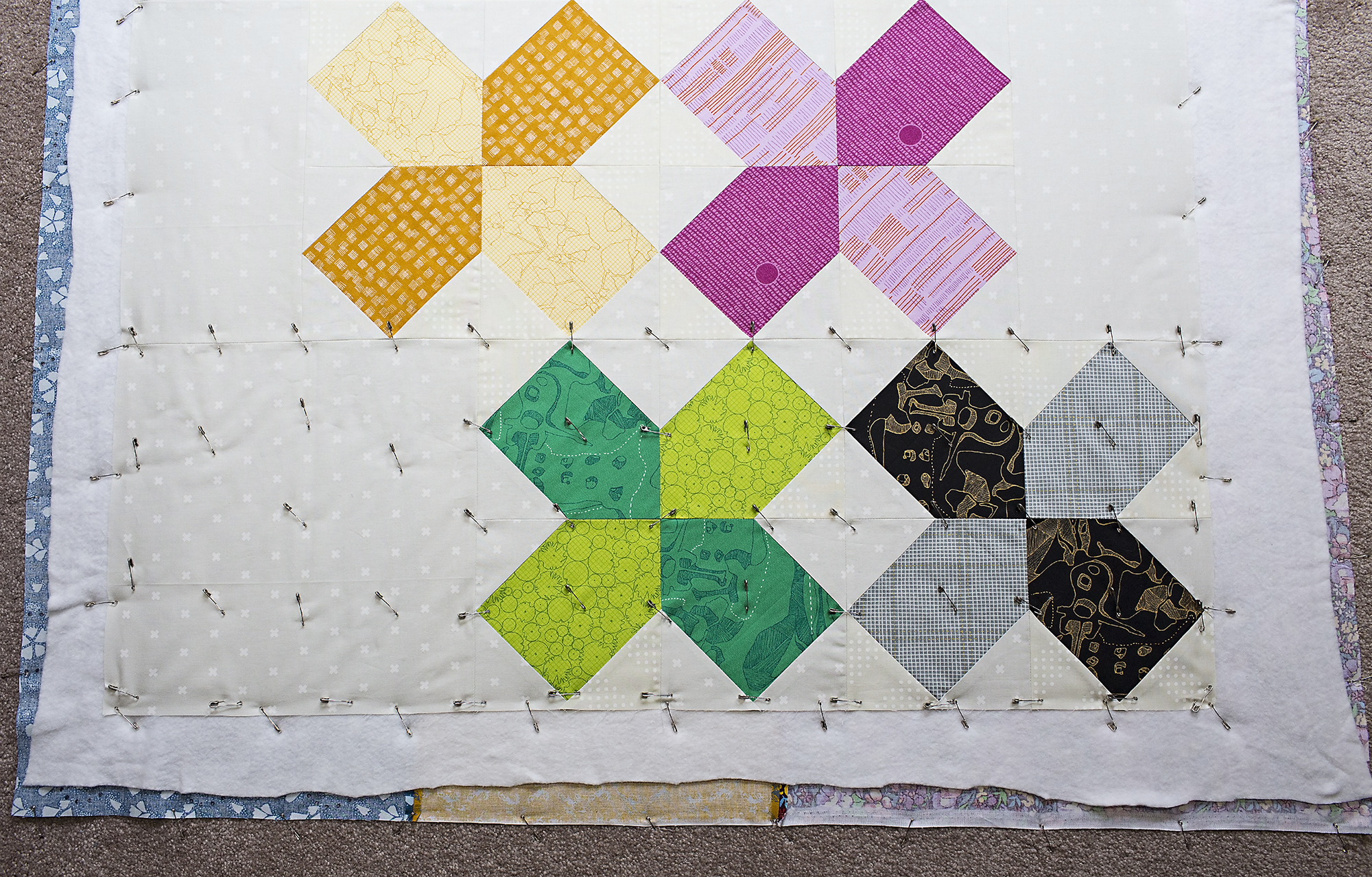
- Time consuming – Hand basting is a time-consuming process, but it is very rewarding and an essential part of quilt making.
- Secure fabric – Hand basting is the most secure way to secure the fabric layers of a quilt together. This is because the traditional method of using small safety pins to attach the layers together can be time consuming and not as secure.
- Thread – Hand basting a quilt requires a specific type of thread, usually a strong cotton thread. This thread is used to tie the fabric layers together securely.
- Tools – Hand basting a quilt also requires some specific tools. A quilt frame, a quilting hoop and a quilting needle are all essential for hand basting a quilt.
- Design – Hand basting a quilt allows the quilter to create a unique and intricate quilt design. The quilter can use the hand basting technique to create a variety of quilt designs, from simple to complex.
Finishing Touches
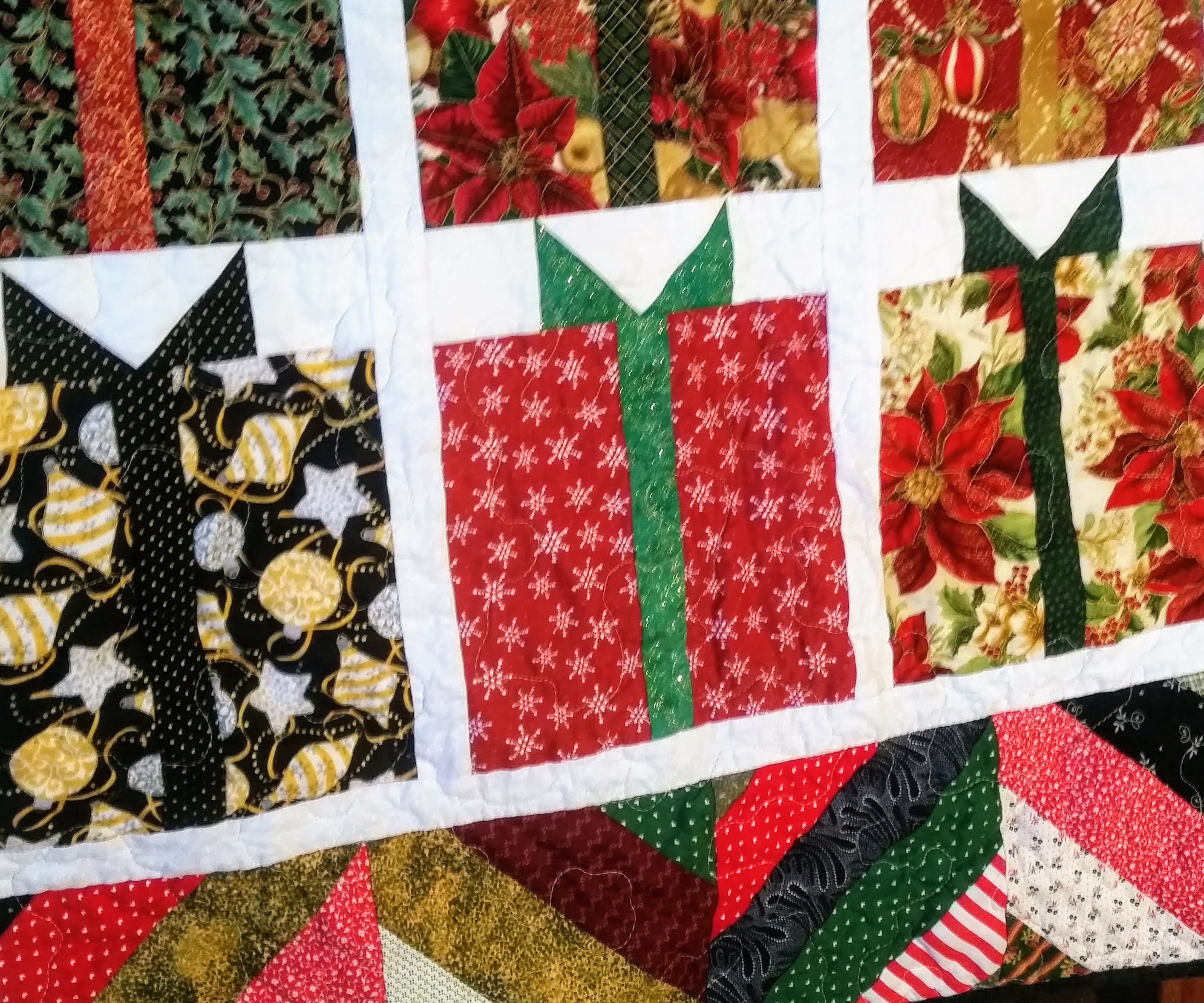
Once the quilt basting is complete, it is time for the finishing touches. The first step is to review the entire basted quilt top. It is important to ensure that the batting and backing fabric are correctly aligned and that the quilt top is lying flat.
Next, the quilt should be trimmed to the size desired. This should be done with a rotary cutter on a self-healing mat. Any excess batting or backing fabric should be trimmed away.
Finally, the quilt should be thread basted. This is done with a running stitch, either by hand or machine. This helps to secure the quilt top, batting, and backing fabric together.
Once the thread basting is complete, the quilt is ready for the next step, quilting.
Pros and Cons of Hand Basting
Pros:
- It is a traditional method of basting.
- It is the most accurate way to ensure the quilt layers stay together while quilting.
- It is more secure than pin basting.
- It is easier to handle and maneuver than pin basting.
- It is great for small quilts, as the basting stitches are easier to manage.
Cons:
- It is a very time consuming process.
- It can be difficult to control the tension and accuracy of the stitches.
- It is not suitable for large quilts, as the basting stitches can be difficult to manage.
- It can be difficult to remove the basting stitches.
Frequently Asked Questions
What Supplies Do I Need to Do Quilt Basting?
- Quilt top: The top piece of the quilt.
- Quilt backing: The bottom piece of the quilt.
- Batting: The middle layer of the quilt.
- Thread: A heavy-duty thread used to stitch the quilt layers together.
- Needle: A large-eye needle used to stitch the quilt layers together.
- Safety pins: Used to temporarily baste the quilt layers together.
- Chalk or fabric marker: Used to mark the quilt layers.
- Rotary cutter and mat: Used to cut the quilt layers.
- Iron and pressing board: Used to press the quilt layers.
What is the difference between quilt basting and traditional basting?
Quilt basting is a method of attaching three layers of fabric – the top, batting, and backing – with safety pins, whereas traditional basting is a method of attaching two layers of fabric with large stitches. Quilt basting is faster and more secure than traditional basting and allows the quilter to move the layers around while they are being attached. Traditional basting is more labor-intensive and can be less secure as the stitches may come undone.
What is the Best Technique for Quilt Basting?
Safety Pin Basting: Safety pin basting is one of the simplest and oldest methods of quilt basting. It involves placing safety pins in a grid-like pattern over the three layers of the quilt – the top, batting, and backing. The pins should be placed about every 6 inches, ensuring the three layers are securely held together.
Spray Basting: Spray basting involves using a temporary quilt basting spray to adhere the three layers of the quilt together. This method is quick and easy and does not require any pins or thread. However, it is important to ensure that the spray does not contain any harsh chemicals that may affect the fabric.
Fusible Basting: Fusible basting uses an adhesive webbing or tape to adhere the top, batting, and backing together. This method is quick and easy and eliminates the need for safety pins or thread. However, it is important to ensure that the adhesive used is appropriate for the fabric.
Stitch Basting: Stitch basting involves using a hand needle and thread to baste the three layers of the quilt together. This method is time consuming but provides the most secure hold of the three layers. It is important to use a strong thread and stitch close to the edges of the quilt layers.
How Long Does Quilt Basting Typically Take?
Quilt basting is a process that involves holding all three layers of a quilt together, usually with safety pins or quilting clips. It is an essential step in the quilt-making process that helps to ensure that the quilt holds its shape and doesn’t shift during the quilting process.
How long does quilt basting typically take?
- The size of the quilt will determine the amount of time it takes to baste it.
- For a small, lap-size quilt, basting typically takes 1-2 hours.
- For a larger queen-size quilt, basting usually takes 2-3 hours.
- For a king-size quilt, basting may take 3-4 hours.
The amount of time it takes to baste a quilt also depends on the skill and experience level of the person doing the basting. An experienced quilter may be able to baste a large quilt in less time than someone who is new to the craft.
Are there any tips I should keep in mind when doing quilt basting?
Use the right basting material: Make sure you are using the correct material for basting your quilt. This could include safety pins, straight pins, basting spray, or thread basting.
Lay the backing fabric flat: When laying the backing fabric on the floor, use weights or pins to make sure it doesn’t move.
Choose a basting method: Before basting, decide which method you want to use. This could be hand-basting, machine-basting, or spray-basting.
Make sure the backing and batting are the same size: When laying out the batting and backing for basting, make sure the two pieces are the same size.
Secure the fabric with pins: Secure the fabric with pins and check that the pins are not too close to the edge of the quilt.
Stitch around the edges: Once you have finished basting the quilt, stitch around the edges to secure the basting stitches.
Conclusion
Quilt basting is an essential part of the quilting process. It helps to secure the quilt top, batting, and backing fabric together in preparation for quilting. There are a variety of methods for basting a quilt, from the traditional hand basting to more modern methods like using fusible web, spray basting, or even pinless basting. No matter which method you choose, basting your quilt properly will help ensure that your finished quilt looks professional and lasts for many years.
